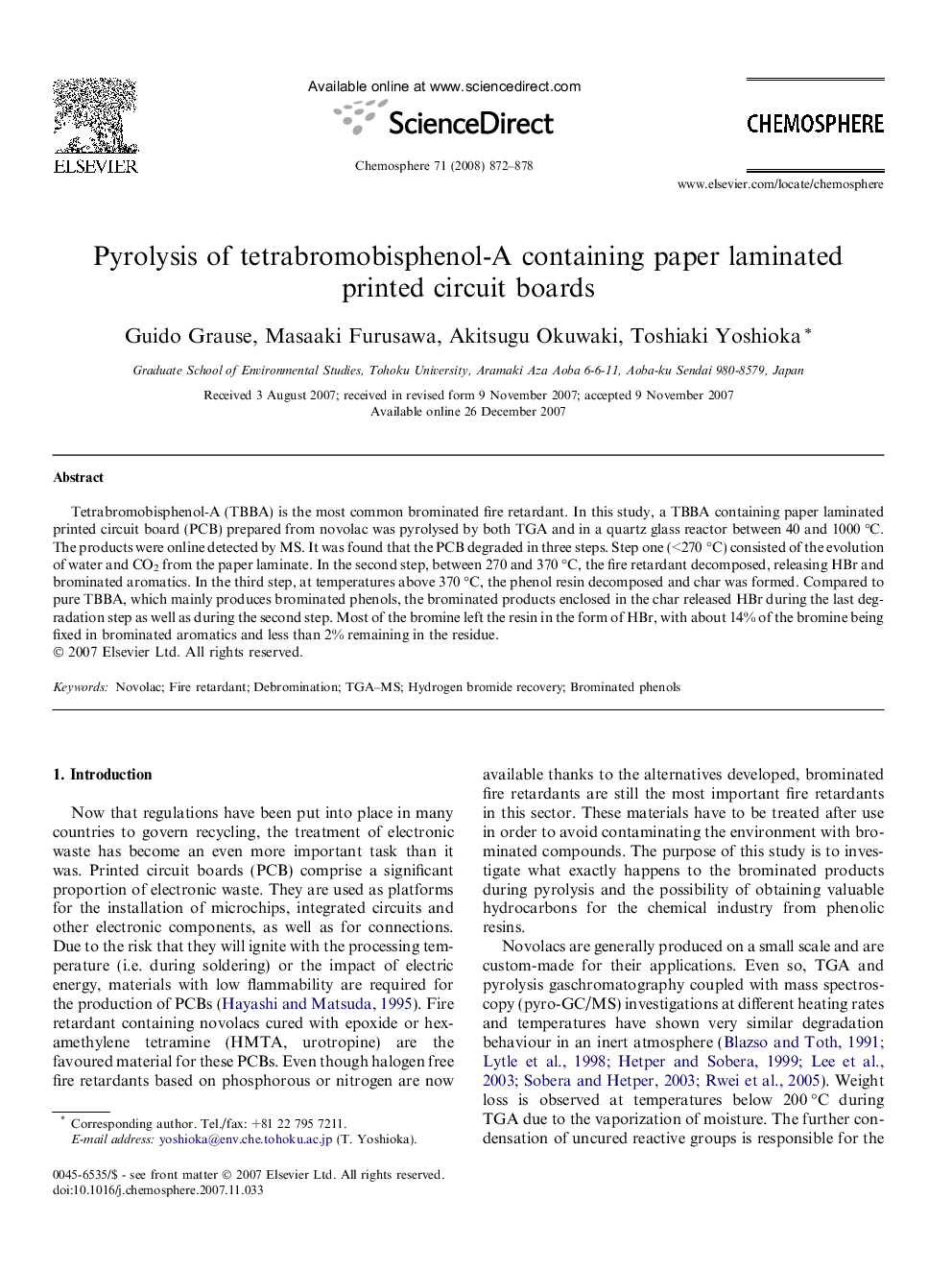| Article ID | Journal | Published Year | Pages | File Type |
|---|---|---|---|---|
| 4414626 | Chemosphere | 2008 | 7 Pages |
Tetrabromobisphenol-A (TBBA) is the most common brominated fire retardant. In this study, a TBBA containing paper laminated printed circuit board (PCB) prepared from novolac was pyrolysed by both TGA and in a quartz glass reactor between 40 and 1000 °C. The products were online detected by MS. It was found that the PCB degraded in three steps. Step one (<270 °C) consisted of the evolution of water and CO2 from the paper laminate. In the second step, between 270 and 370 °C, the fire retardant decomposed, releasing HBr and brominated aromatics. In the third step, at temperatures above 370 °C, the phenol resin decomposed and char was formed. Compared to pure TBBA, which mainly produces brominated phenols, the brominated products enclosed in the char released HBr during the last degradation step as well as during the second step. Most of the bromine left the resin in the form of HBr, with about 14% of the bromine being fixed in brominated aromatics and less than 2% remaining in the residue.
